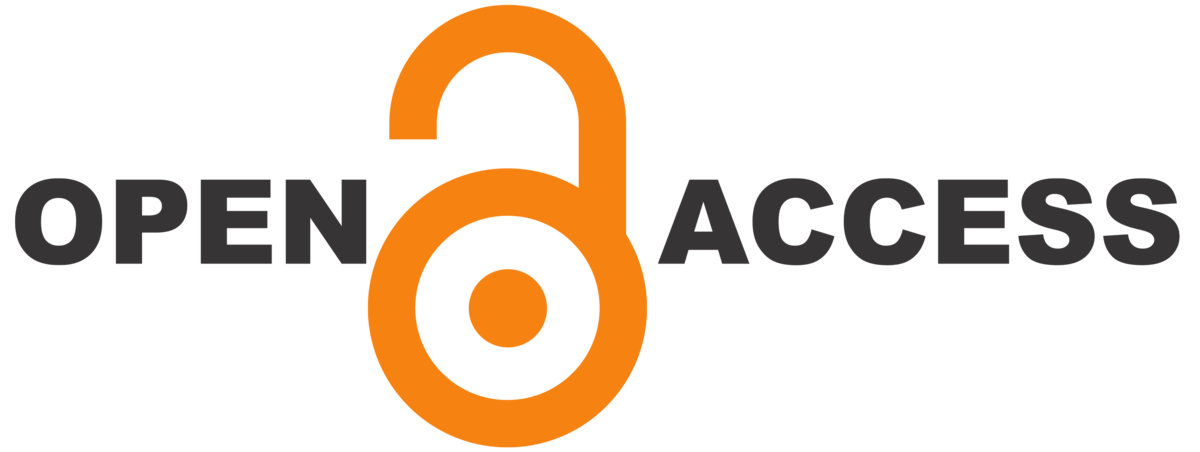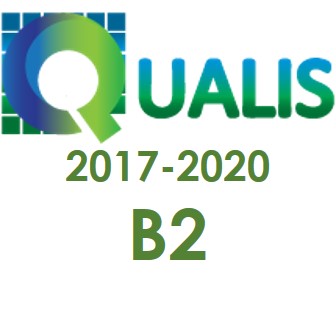Orientações de proteção radiológica pós-terapia para pacientes submetidos à radioiodoterapia: uma revisão integrativa
DOI:
https://doi.org/10.22481/rsc.v18i3.10918Palavras-chave:
Medicina Nuclear, Proteção Radiológica, Radioisótopos de Iodo, Radioterapia, Legislação VigenteResumo
Resumo
A Radioiodoterapia é um método terapêutico que de forma eficaz utiliza o NaI-131 no tratamento de doenças benignas. Este radiofármaco possui meia-vida de 8,02 dias, para este período ao paciente e a seus familiares devem ser disponibilizadas orientações que mantenham a dose do público inferior aos limites recomendados. Este artigo tem como objetivo analisar onde, de que forma e em qual direção ocorrem as publicações direcionadas ao período de isolamento domiciliar para pacientes submetidos à radioiodoterapia. Realizou-se uma revisão integrativa na base de dados SCOPUS com as palavras-chave. Foi realizada a leitura dos resumos e posterior classificação de acordo com o tema e disponibilidade do texto na íntegra. Foram listados 45 artigos destes 26 foram elegíveis, com origem predominantemente dos Estados Unidos (7), China, Irã e Reino Unido, 7 (3 cada), tendo a maior parte das publicações ocorrido nos anos de 2014 (4) e 2006 (3). É unânime a opinião de que as instruções existentes se corretamente seguidas são suficientes para manter o público em segurança. Quanto à direção, a grande maioria se destina a medir e avaliar a exposição dos familiares no ambiente doméstico. A questão mais discutida é a formulação de orientações a partir de taxas de dose instantânea ou retenção de iodo, considerando os interesses ou as condições socioeconômicas de cada paciente e os estudos que confrontam o valor da dose recebida por familiares mediante uso de dosímetro.
Downloads
Referências
Referências
Sociedade Brasileira De Medicina Nuclear (SBMN). Guias e Orientações. 2020. Disponível em: http://sbmn.org.br/educacao/guidelines-orientacoes. Acesso em: 04 abr 2021.
International Atomic Energy Agency (IAEA). Radiation protection and safety of radiation sources: international basic safety standards. Vienna: General Safety Requirements Part 3; 2011.
Ministério da Ciência, Tecnologia e Inovação. Comissão Nacional de Energia Nuclear. Norma Nuclear NN 3.05: requisitos de segurança e proteção radiológica para serviços de Medicina Nuclear. Diário Oficial da União, 2013.
Barros, P. P. Análise da radiometria realizada em pacientes submetidos à radioiodoterapia, Florianópolis. 2017.
Oliveira, J. P, et al. Análise dosimétrica de acompanhantes de pacientes de medicina nuclear internados em quarto terapêutico. São Paulo: Radiol Bras; 2008 Fev. V. 41, n. 1, 35-38p.
Chen, L, et al. Radiation safety assessment of caregivers of thyroid cancer patients treated with 131I in Taiwan. S.I: Radiation Physics and Chemistry; 2020 Jul. V.172.
Zehtabian, M, et al. Measurement of the dose to the family members taking care of thyroid cancer patients undergoing I-131 therapy in Nuclear Medicine using TLD-100. S.I: Radiation Protection Dosimetry; 2016 Ago. V. 174(4), 1-4 p.
Barrington, S.F, et al. Measurement of the internal dose to families of outpatients treated with 131I for hyperthyroidism. S.I: European Journal of Nuclear Medicine and Molecular Imaging; 2008 Ago. V. 35(11), 2097-2104 p.
Pant, G.S, et al. Radiation dose to family members of hyperthyroidism and thyroid cancer patients treated with 131I. S.I: Radiation Protection Dosimetry; 2005 Ago. V. 118(1), 22-27 p.
Mohammadi, H. Radiation exposure rate from 131I-treated hyperthyroid patients - A dynamic study, with data for up to 42 D post therapy. S.I: Health physics; 2005 Mai. V. 88(5), 486-490 p.
Shahhosseini, S, et al. Radiation dose rate and urinary activity in patients with differentiated thyroid carcinoma treated with radioiodine-131; a surrey in Iranian population. S.I: Hellenic Journal of Nuclear Medicine; 2004 set. V. 7(3), 192-194 p.
Rutar, F.J, et al. Feasibility and safety of outpatient Bexxar therapy (tositumomab and iodine I 131 tositumomab) for Non-Hodgkin’s lymphoma based on radiation doses to family members. S.I: Clinical Lymphoma; 2001 Dez. V. 2(3), 164-172 p.
Barrington, S.F, et al. Radiation exposure of the families of outpatients treated with radioiodine (iodine-131) for hyperthyroidism. S.I: European journal of nuclear medicine; 1999 Jun. V. 26(7), 686-692 p.
Mathieu, I, et al. Recommended restrictions after 131I therapy: Measured doses in family members. S.I: Health physics; 1999 Fev. V. 76(2), 129-136 p.
Jeong, K.H, et al. Estimation of external radiation dose to caregivers of patients treated with radioiodine after thyroidectomy. S.I: Health physics; 2014 Abr. V106(4), 466-474 p.
Liu, B, et al. Thyroid cancer: Radiation safety precautions in 131I therapy based on actual biokinetic measurements. S.I: Radiology; 2014 Out. V. 273(1), 211-219 p.
Sisson, J.C, et al. Radiation safety in the treatment of patients with thyroid diseases by radioiodine 131I: Practice recommendations of the american thyroid association. S.I: Thyroid; 2011 Abr. V. 21(4), 335-346 p.
Barrinton, S.F, et al. Radiation dose rates from patients receiving iodine-131 therapy for carcinoma of the thyroid. S.I: European journal of nuclear medicine; 1966 Fev. V. 23(2), 123-130 p.
Beckers, C. Regulations and policies on radioiodine 131I therapy in Europe. S.I: Thyroid; 1997 Abr. V. 7(2), 221-224 p.
Hervé, R, et al. Thyroid cancer patients treated with 131I: Radiation dose to relatives after discharge from the hospital. S.I: Thyroid; 2012 Jan. V. 22(1), 59-63 p.
Liu, B, et al. Radiation safety precautions in 131I therapy of Graves' disease based on actual biokinetic measurements. S.I: Journal of Clinical Endocrinology and Metabolism; 2015 Ago. V. 100(8), 2934-2941 p.
Steward, P.G. An excel-based system to manage radiation safety for the family of patients undergoing 131I therapy. S.I: Journal of nuclear medicine technology; 2017 Març. V. 45(2), 102-110 p.
Saeed, M.K.Investigation of the level of safety for out-patients treated with high dose of 131I in Sudan. S.I: Radiation Physics and Chemistry; 2014 Out. V. 103, 99-102 p.
Han, E.Y, et al. A practical guideline for the release of patients treated by I-131 based on Monte Carlo dose calculations for family members. S.I: Journal of Radiological Protection; 2014 Apr. V. 34(2), N7-N17 p.
Han, E.Y, et al. TEDE per cumulated activity for family members exposed to adult patients treated with 131I. S.I: Radiation Protection Dosimetry; 2012 Jul. V. 153(4), 448-456 p.
Willeaignon, J, et al. Outpatient radioiodine therapy for thyroid cancer: A safe nuclear medicine procedure. S.I: Clinical nuclear medicine; 2011 Jun. V. 36(6), 440-445 p.
Gründel, M, et al. 131I exhalation by patients undergoing therapy of thyroid diseases. S.I: Radiation Protection Dosimetry; 2007 Out. V. 129(4), 435-438 p.
Muammad, W, et al. Release criteria from hospitals of 131I thyrotoxicosis therapy patients in developing countries - case study. S.I: Radiation Protection Dosimetry; 2006 Dez. V. 121(2), 136-139 p.
Cappelen, T, et al. Radiation exposure to family members of patients with thyrotoxicosis treated with iodine-131. S.I: European Journal of Nuclear Medicine and Molecular Imaging; 2005 Set. V. 33(1), 81-86 p.
Woodings, S. Radiation protection recommendations for I-131 thyrotoxicosis, thyroid cancer and pheochromocytoma patients. S.I: Australasian Physical and Engineering Sciences in Medicine; 2004 Set. V. 27(3), 118-128 p.
Wasserman, H.J, et al. Analysis of radiation doses received by the public from 131I treatment of thyrotoxic outpatients. S.I: Nuclear medicine communications; 1993 Nov. V. 14(9), pp. 756-770.
Downloads
Publicado
Edição
Seção
Licença
Copyright (c) 2022 Revista Saúde.com

Este trabalho está licenciado sob uma licença Creative Commons Attribution 4.0 International License.













